The Art Lover’s Travel Guide to the 59th Venice Biennale
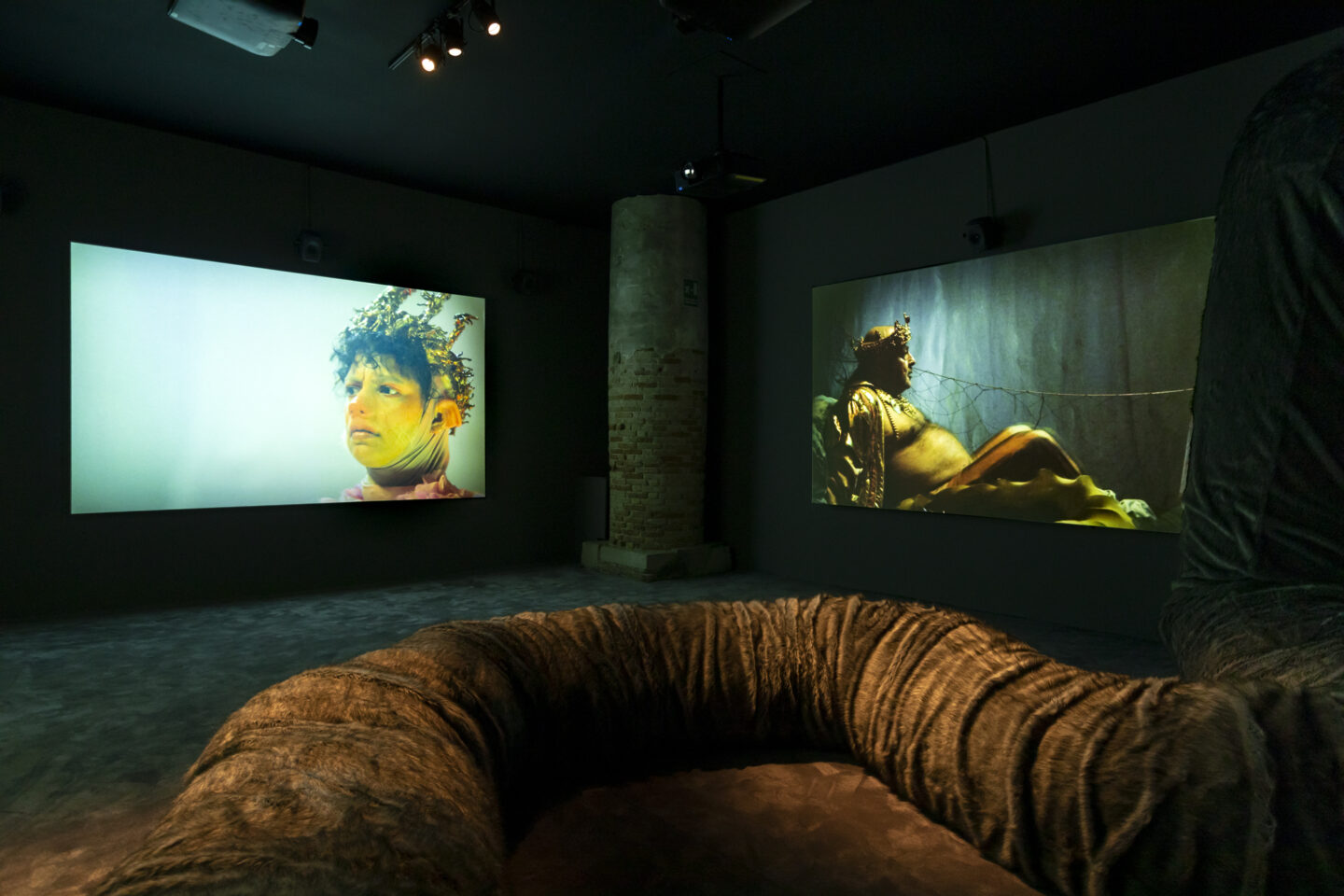

Words: Chris Erik Thomas.
Since 1895’s very first edition, art lovers have flocked to Venice every two years for the Biennale Arte. Spread across Italy’s famed floating city, the International Art Exhibition began as a means of connecting artists from countries around the world, which earned it the moniker of the “Olympics of the art world.” It was immediately a massive success in the early years — attracting more than 200,000 visitors in 1895 and more than 300,000 by 1899. It has now been 127 years since this experiment in bridging borders between art communities began, and its success and grandeur has only grown with age as modern iterations regularly attract over 500,000 visitors.
Throughout its long history, the Biennale has acted as an incubator for new art movements and emerging positions in contemporary art, as well as surviving world wars and plagues. As the world attempts to shake free of the darkness of the COVID-19 pandemic, the Biennale has returned after being delayed last year — bringing both artists and art lovers back to the city for the first time since 2019.
With the 59th International Art Exhibition, curatorial duties were handed over to Cecilia Alemani, who became the first Italian woman to hold the position in its history. Titled “The Milk of Dreams” (a reference to a book by Leonora Carrington), the show is spread across multiple locations and heavily features work by both women and non-binary artists. In the main exhibition spaces of the Central Pavilion (Giardini) and in the Arsenale, 213 artists from 58 countries have works on view. With 180 of the artists having never participated before and 80 of 1,433 works and objects made specifically for the event, it has become both an unforgettable edition of the Biennale Arte and a triumphant return to form after being delayed due to the pandemic.
Among the many artists whose works have found temporary homes in Venice for the next few months, many are represented by galleries that took part in Art Düsseldorf 2022. Even the most seasoned art lovers can get overwhelmed by the selection, so to help sort out the winding routes through Venice’s famed canals, we’ve made a travel guide that puts the spotlight on these artists.
Before you head to Venice to soak up the massive amount of art on display, slide through and mark down all of our must-see spots at the Biennale Arte 2022.
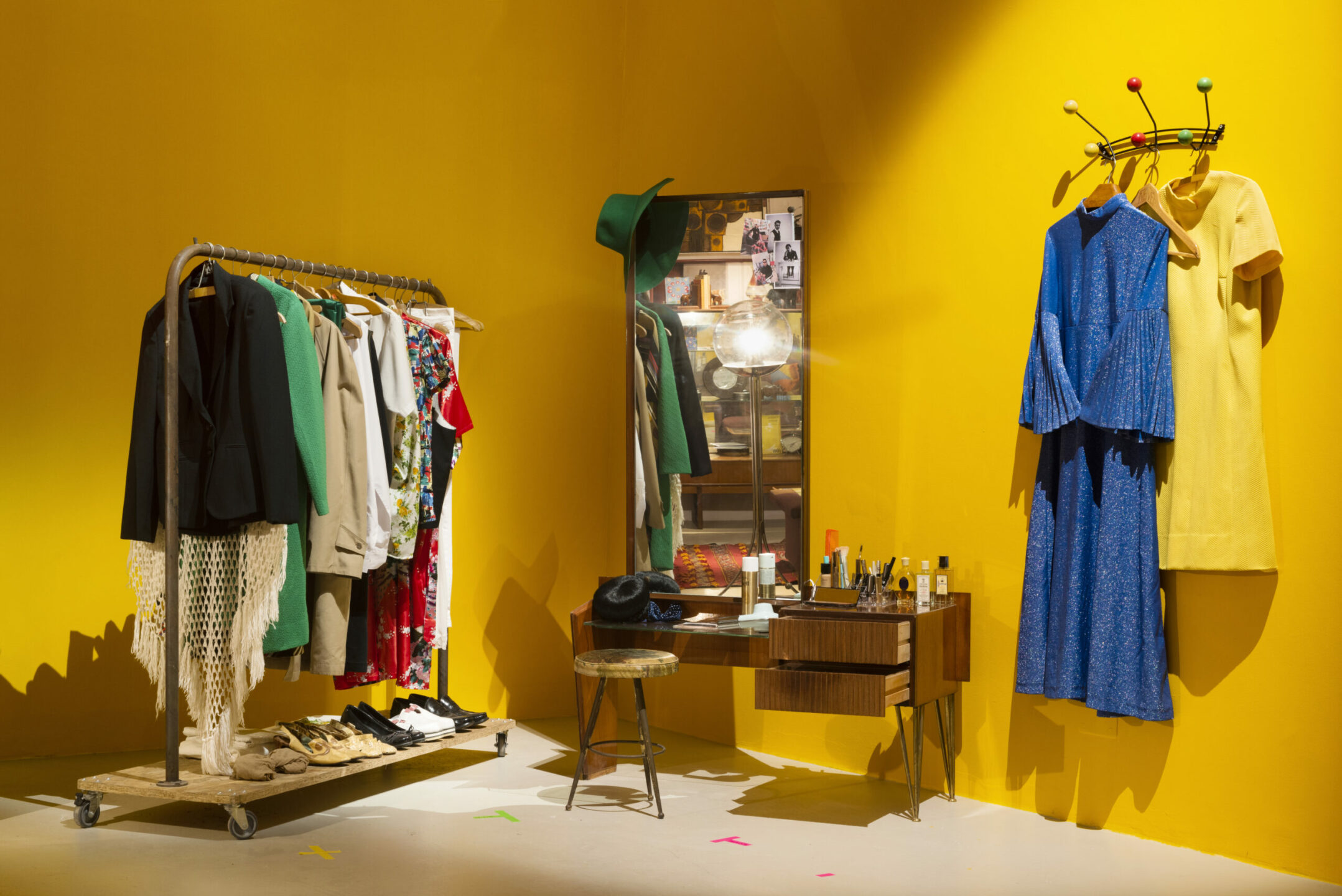
Zineb Sedira. "Les rêves n’ont pas de titre / Dreams Have No Titles". General commissioner: Institut français 59th La Biennale di Venezia, 2022. © Zineb Sedira, Adagp, Paris. Photo © Thierry Bal and © Zineb Sedira. Courtesy the artist and kamel mennour, Paris.
The most obvious starting point is, of course, the Central Pavilion in the east of the city. As the main hub for the Biennale Arte, it is split into two sections: the sprawling public gardens of the Giardini and the cavernous former dockyards of the Arsenale. Both sites also host a satellite array of smaller pavilions for each respective country. To begin, we’ll highlight one artist whose work is part of the main exhibition, as well as two artists at country pavilions for France and Switzerland.
In the “La Culla Della Strega / The Witch’s Cradle” exhibition, we draw attention to the print “Der Spiegel der Genoveva” (1967) by Surrealist artist Meret Oppenheim (Galerie Knoell and Galerie Krinzinger). The work features a strange and slightly disturbing woman transforming into an animal with a long hairy leg that ends in a beastly hoof. In the country pavilions, two artists represented by Kamel Mennour, the Paris and London-based gallery, have made a splash among both visitors and critics.
First, at the French Pavilion, an immersive installation by Zineb Sedira packs a powerful punch. The show, “Dreams Have No Titles,” is monumental in part because this is the first time an artist of Algerian descent has represented the country, but also because of its nod to the Algerian independence movement of the 1960s — specifically the drive to create militant films in the 60s and 70s. Nearby, at the Swiss Pavilion, the artist Latifa Echakch’s immersive installation, “The Concert,” features large-scale sculptures inspired by the folk statues and is set to a composition by percussionist Alexandre Babel. Together, it is an ethereal, otherworldly experience that demands to be seen.
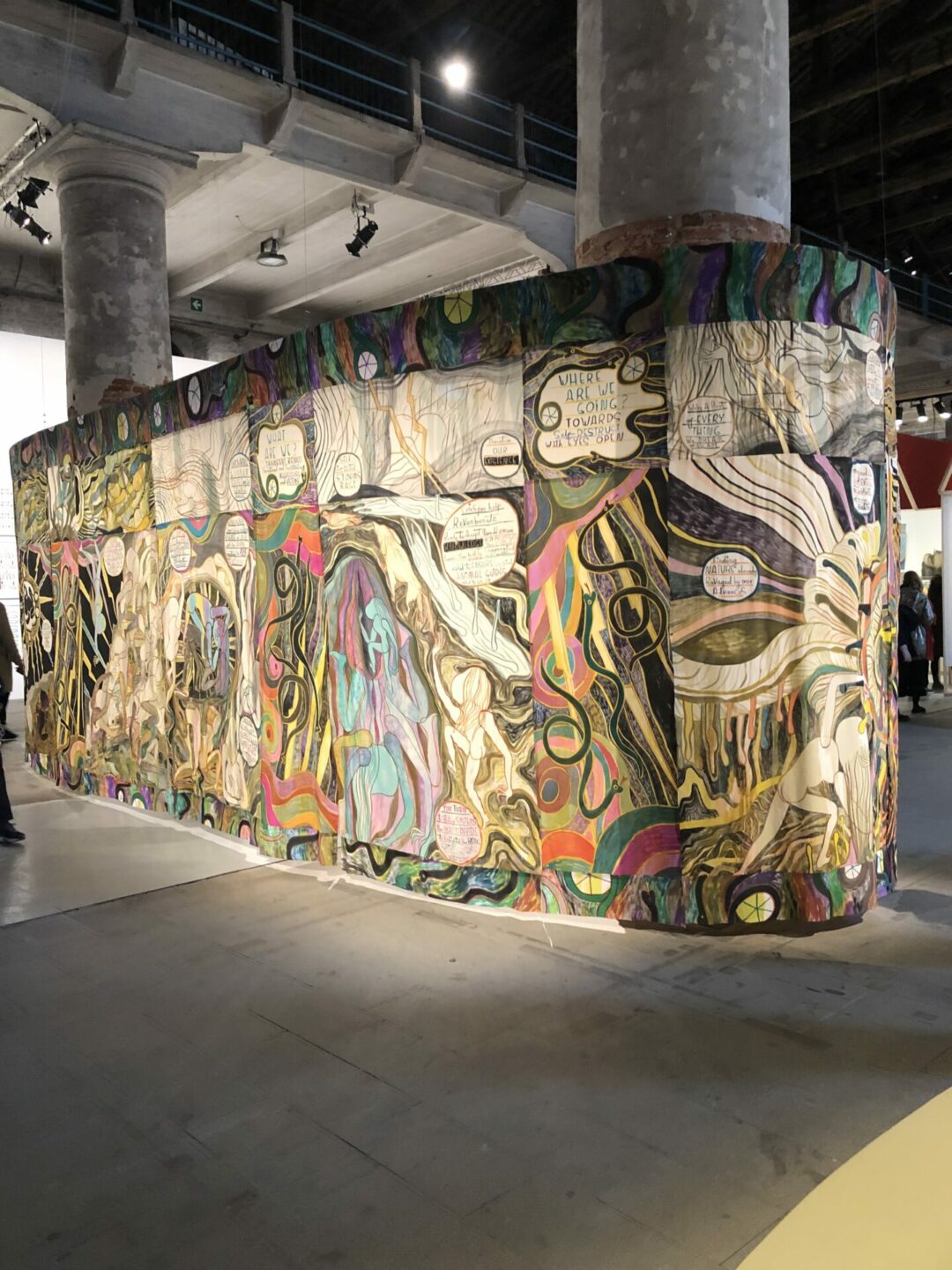
Emma Talbot. "Where Do We Come From? What Are We? Where Are We Going?", 2021. Acrylic on silk. 300 x 14000 cm. Courtesy the artist, Petra Rinck Galerie, and Galerie Onrust.
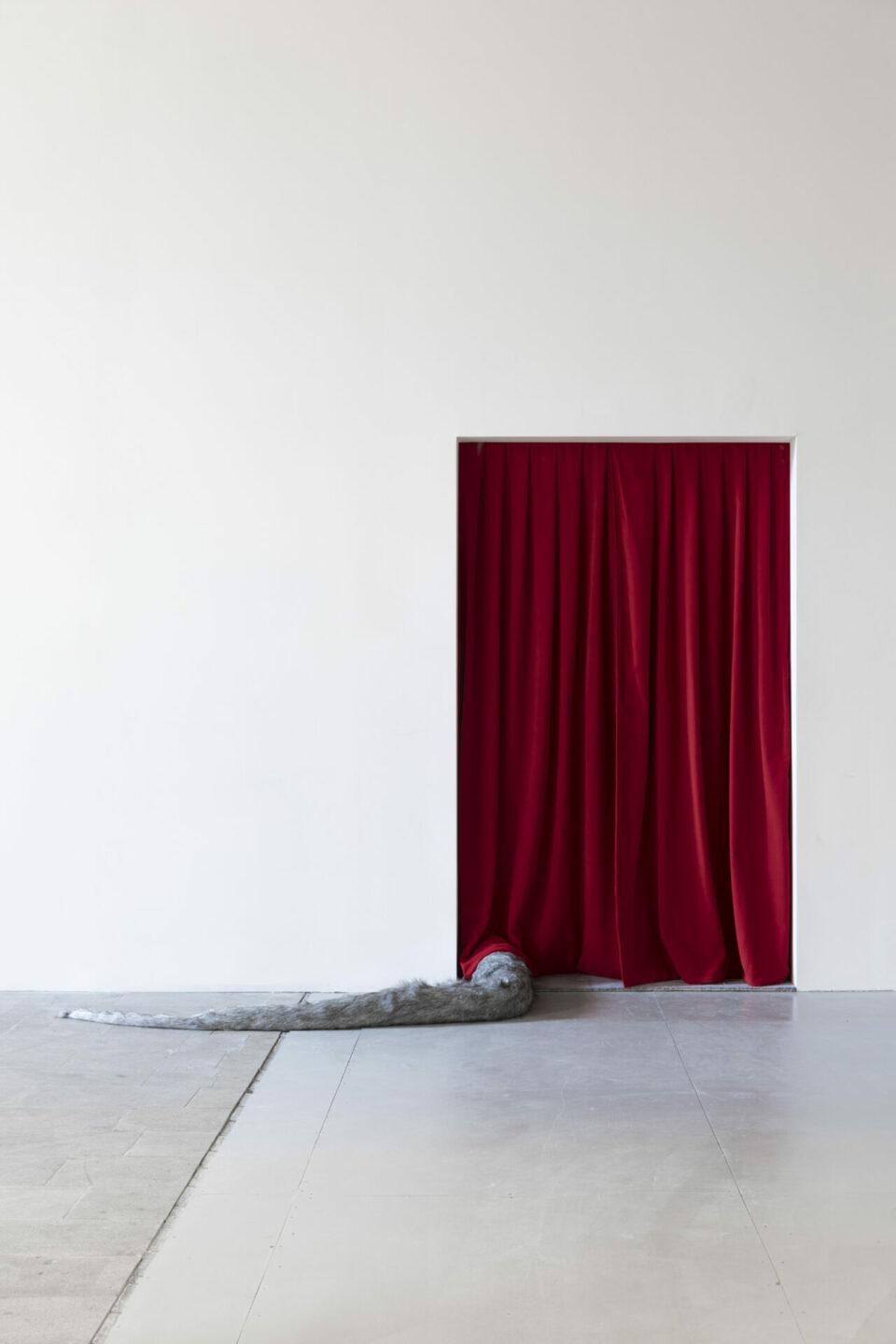
Marianna Simnett. "The Severed Tail", 2022. Three-channel video installation. Photo by: Roberto Marossi. Courtesy: La Biennale di Venezia.
Moving slightly over from the Giardini, we now go to the cavernous former dockyards of the Arsenale. Among the hundreds of artists participating this year across the Central Pavilion, we recommend nine captivating artists whose work can be found in the massive industrial space, including three representing country pavilions.
First is a new work by Emma Talbot (Petra Rinck Galerie), “Where Do We Come From, What Are We, Where Are We Going?” (2021). The title is taken from Paul Gauguin’s famed painting of the same name, while the subject matter is a spiked critique of Gauguin’s self-exile to Tahiti while the nation was under French colonial rule. There is also the powerful 1989 piece, “Kiss of the Rhinoceros,” by Rebecca Horn (Galerie Thomas Schulte). The sculptural work imbues metal rhinoceros horns and huge metal arms with a tension that steadily increases as the horns move towards one another.
Two artists from Berlin-based gallery Société are essential viewing. First is a new video installation by Marianna Simnett called “The Severed Tail,” which is a 20-minute journey of a piglet through a multilayered world of fetish. The second, LuYang’s “DOKU – Digital Descending,” is a continuation of his anime series that began in 2020. This iteration takes viewers on a journey that includes everything from a revenge shaman and anxious plane passengers to six different reincarnations.
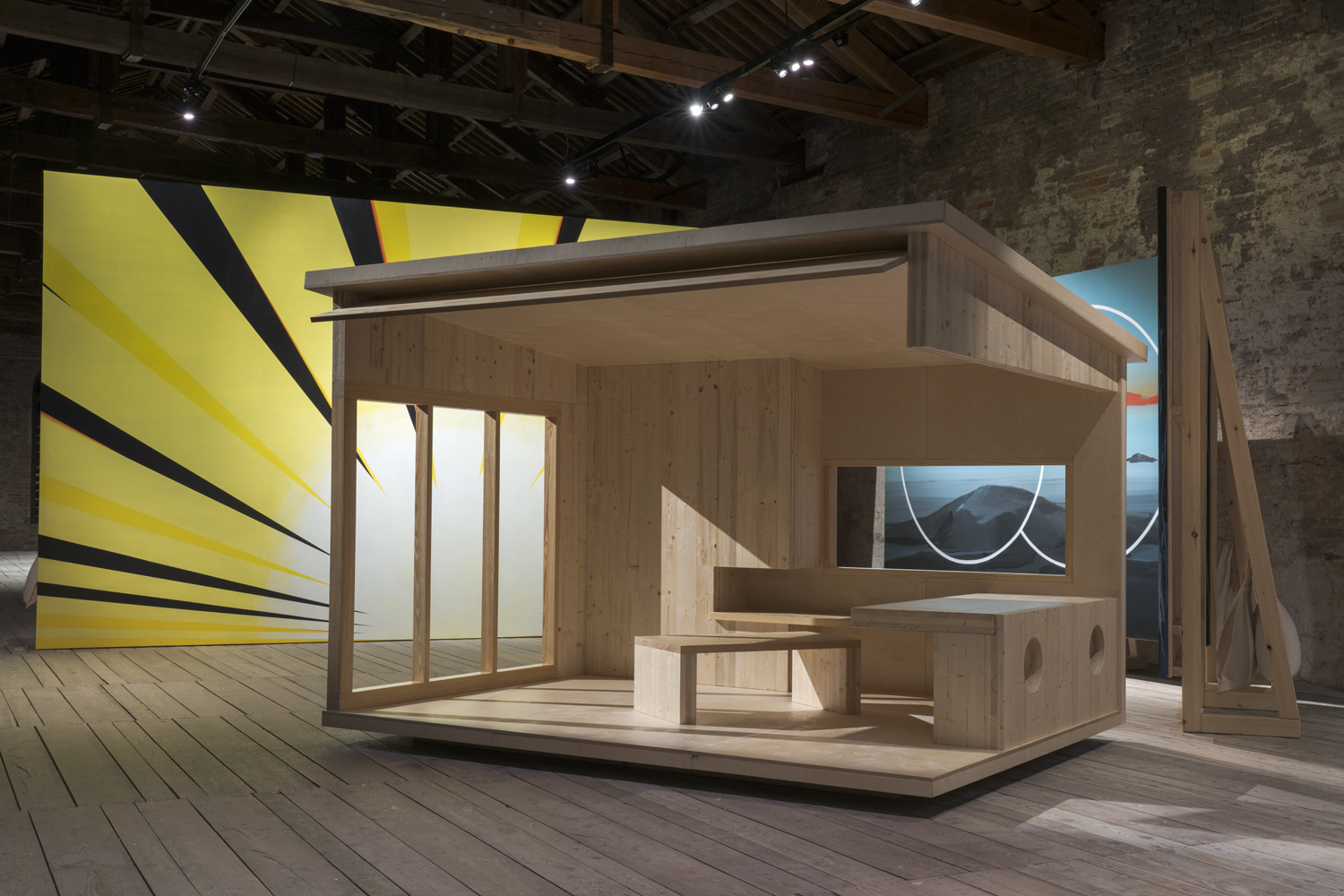
Tina Gillen. Installation view at the Luxembourg Pavilion, 2022. © Florian Kleinefenn.
Rounding out the selection as part of the main exhibition, there is Polish photographer Joanna Piotrowska (Galeria Thomas Zander), who has a selection of pieces from both her “Untitled” (2017) and “Self-Defense” (2014-15) series. And finally, we steer you towards Chilean artist Sandra Vásquez de la Horra (Galerie Michael Haas), who grew up during the 17-year military regime of Augusto Pinochet. Housed in a wooden structure made by the artist, her works include “Der Tod und das Mädchen” (2015), “América sin Fronteras” 2017), “Erupciones” (2019), “La Voz de un Pueblo que lucha” (2019, “Flotante y su genealogía” (2020), and “Saludo a Olorun” (2021), as well as new pieces created for the Biennale.
Within the numerous country pavilions, three artists are particularly worth a view. First is the Grand Duchy of Luxembourg Pavilion, located in the Sale D’Armi, where Tina Gillen (Nosbaum Reding) presents “Faraway So Close.” The large-scale installation is punctuated by a suite of new paintings made for the show and is inspired by the Sale D’Armi’s original use as a military storage space. At the Malta Pavilion, “Diplomazija Astuta” by Arcangelo Sassolino (Philipp von Rosen Galerie) takes inspiration from Caravaggio’s “The Beheading of Saint John the Baptist.” Using molten steel droplets, the sculptural installation was created in collaboration with curators Keith Sciberras and Jeffrey Uslip, artist Giuseppe Schembri Bonaci, composer Brian Schembri, and project managers Nikki Petroni and Esther Flury.
Finally, in the first-ever national pavilion for the Sultanate of Oman, five artists have converged for “Destined Imaginaries,” a sprawling exhibition curated by Aisha Stoby and featuring works by Radhika Khimji (Galerie Krinzinger), as well as Anwar Sonja, Hassan Meer, Budoor Al Riyami, and Raiya Al Rawahi. Situated at the conclusion of the exhibition, Khimji’s site-specific work, “Under, Inner, Under,” includes seven painted textiles, two interlocking tile structures, two paintings on wood, one wooden sculpture, and one wooden panel. The complex array of works are inspired by the Al Hoota Caves, a two-million-year-old cave system in Dakhiliyah, Oman.
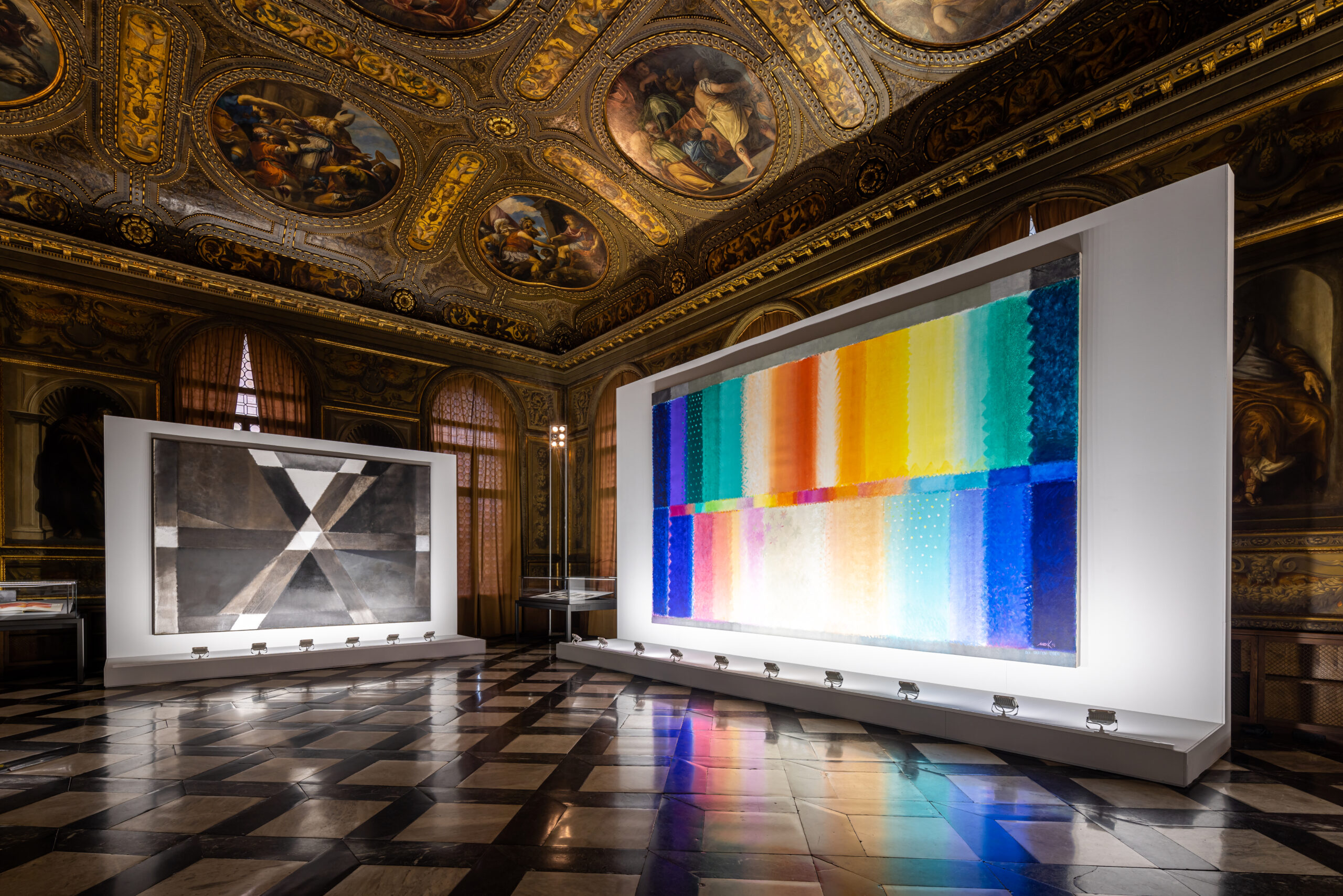
Heinz Mack. Installation view of "Vibration of Light", 2022. Biblioteca Nazionale Marciana, Venice. Photo: Sebastian Drüen. Courtesy of Beck & Eggeling and Geuer & Geuer Art.
As if the 213 artists from 58 countries included in the main exhibition program this year weren’t enough, the Biennale Arte also includes a number of must-see Collateral Events. These additional exhibitions, organized by non-profit international and national institutions, form a constellation around the Central Pavilion. With dozens of official and unofficial pop-up exhibitions dotting Venice, it guarantees that art lovers will never run out of excuses to wander the city’s famed streets. Among the official list of Collateral Events, we want to highlight six that we’re checking out this year.
First, we direct your attention to a solo show by Heinz Mack (Beck & Eggeling) organized by the Biblioteca Nazionale Marciana. In “Vibrations of Light” at the Biblioteca Nazionale Marciana (Entrance through the Museo Correr), a towering spacial installation featuring both large-scale paintings, rotating steles, and a four-meter-high mirror sculpture combine for an unforgettable show that’s on view until July 17. Just next door, Espace Louis Vuitton has organized and staged the exhibition “Apollo, Apollo” by Katharina Grosse (König Galerie). The show explores the dialogue between self and form, using both metallic mesh fabric and the artist’s own body.
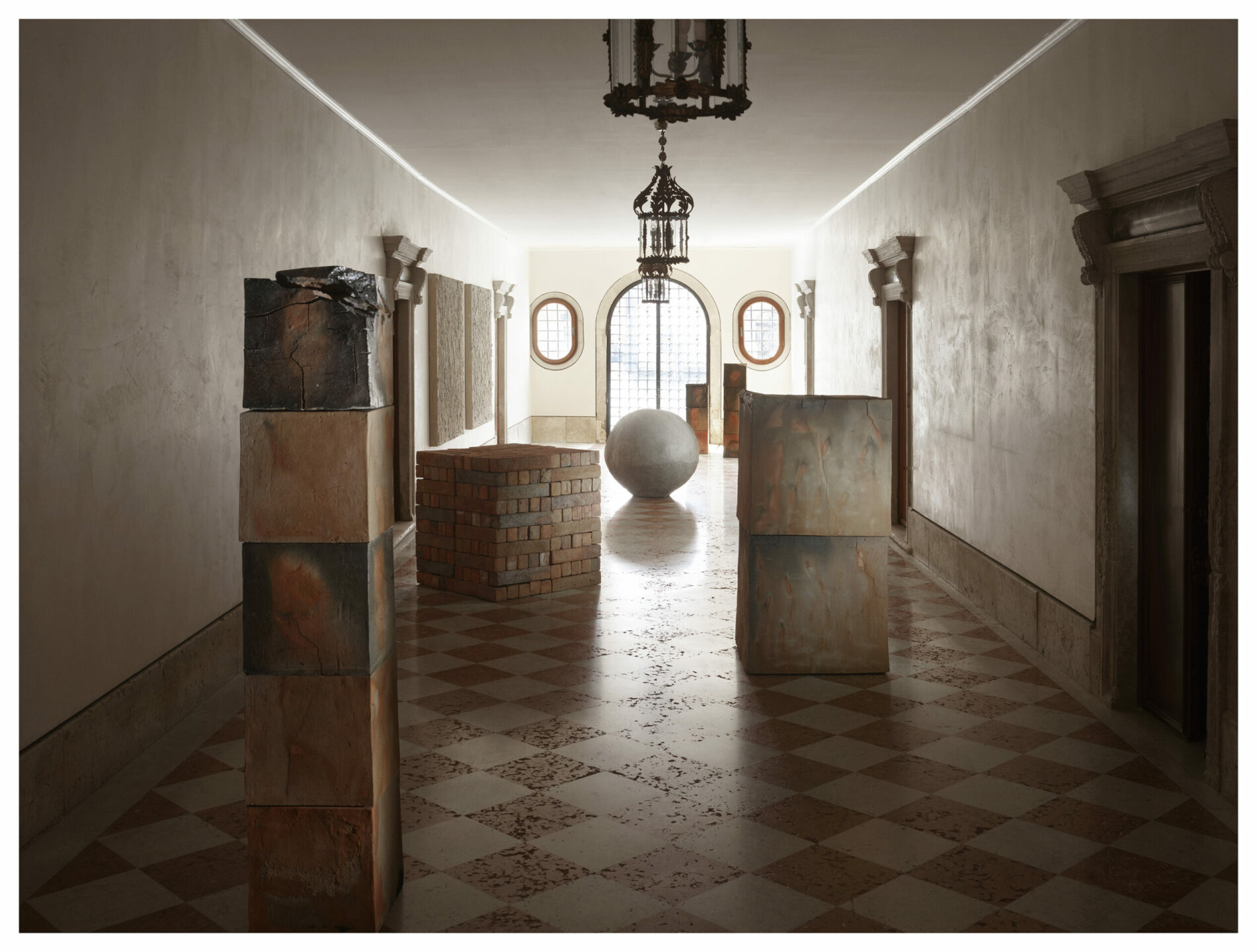
Bosco Sodi. Exhibition view of "What Goes Around Comes Around", 2022. Palazzo Vendramin Grimani. © Courtesy of Kasmin, New York; Axel Verwoordt, Antwerp; and König, Berlin. (c) Laziz Haman.
A short walk away, two exhibitions in close proximity present a compelling duet of contemporary positions. The first is a group show organized by the Parasol unit foundation for contemporary art and takes place at the Conservatorio di Musica Benedetto Marcello. The exhibition, “Uncombed, Unforeseen, Unconstrained,” connects works by eleven artists, including Julian Charriere (Dittrich & Schlechtriem and Sies + Hoke), under the common theme of entropy, or the measure of disorder, randomness, and unpredictability within a system. The second exhibition is “Times Reimaged” by Chun Kwang Young (Beck & Eggeling), which can be found at the Palazzo Contarini Polignac. The exhibition, organized by the Boghossian Foundation, continues the theme of interconnectedness between living beings that the artist has explored for decades. The exhibition features a range of works crafted in hanji (Korean mulberry paper) that are as powerful as they are fragile.
The final recommendations for official Collateral Events feature two artists drawing inspiration from the natural world to craft unforgettable pieces. At Palazzo Vendramin Grimani, Fondazione dell’Albero d’Oro has organized an art residency by Mexican artist Bosco Sodi (König Galerie) titled “What Goes Around Comes Around.” The residency includes a solo exhibition dedicated to works of painting and sculpture crafted with raw, natural materials that play off of the mercantile history of the space. A walk away, Danish conceptual artist Tue Greenfort (König Galerie) has found solace in the biodiversity of Venice’s lagoon. Organized by the ERES Foundation and staged at Castello 1228, the exhibition continues themes that began in his 2021 project, “Algae in Munich,” by focusing on the complex beauty of marine life that include both algae and jellyfish.
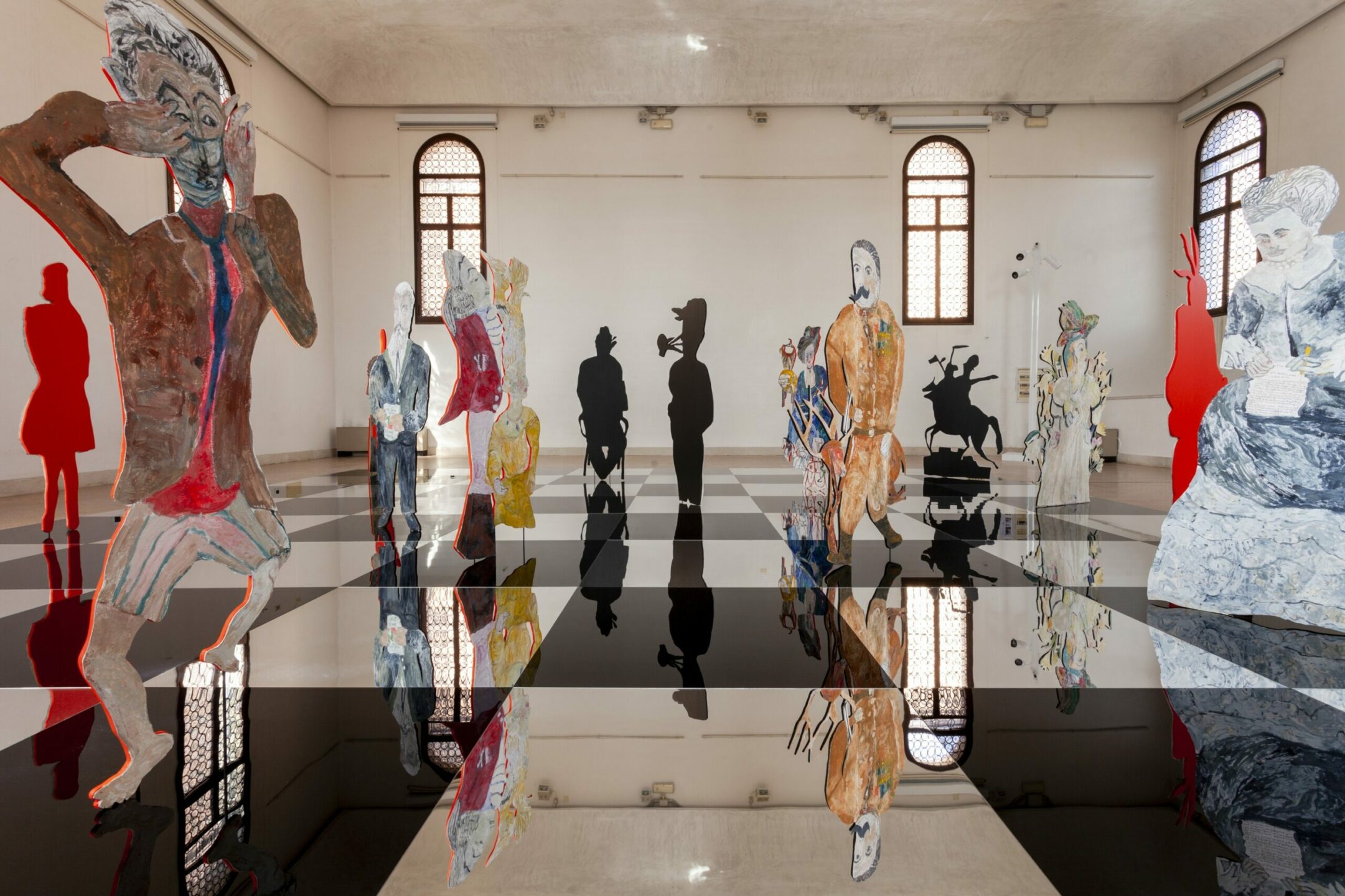
Anna Boghiguian. "The Chess Game", 2022. KUB in Venice. Photo: Fulvio Orsenigo. Courtesy of the artist © Anna Boghiguian, Kunsthaus Bregenz.
Rounding out our guide, we’ve found a selection of six exhibitions happening outside of the official Biennale Arte program worth checking out. We begin with “burn shine fly,” a special exhibition by Swiss artist Ugo Rondinone (Galerie Krobath + kamel mennour) that is on view until September 24. Mixing both previously created and entirely new bronze sculptural elements, the exhibition contrasts perfectly with the rich history of the Scuola Grande San Giovanni Evangelista, which was founded in 1261. Meanwhile, a short walk away, OGR Torino has organized a site-responsive project, “ALLUVIUM,” in the Complesso dell’Ospedaletto. The exhibition brings together the Iranian artist trio of Ramin Haerizadeh, Rokni Haerizadeh, and Hesam Rahmanian (Galerie Krinzinger) for a series of iron sculptures and terracotta plates imbued with deep cultural ties to Dubia and the Middle East.
Be sure to check out the limited-run exhibition “KUB in Venice,” which ends on July 4. Situated in Venice’s historic Scuola di San Pasquale, the show features site-specific work by Anna Boghiguian (KOW), as well as Otobong Nkanga. On the upper floor, Boghiguian presents “The Chess Game,” a large-scale installation that interrogates themes of power and conflict through the board game. Another must-see exhibition is an expansive group show put on by the Venice branch of Galerie Dr. Dorothea van der Koelen titled “In The Change Of Time.” The show brings together eight artists from six different countries — including Lore Bert, Daniel Buren, Hans Jörg Glattfelder, Mohammed Kazem, Joseph Kosuth, Fabrizio Plessi, Turi Simeti and Günther Uecker — for a multifaceted exploration of the power of culture during a time of great sociopolitical upheaval.
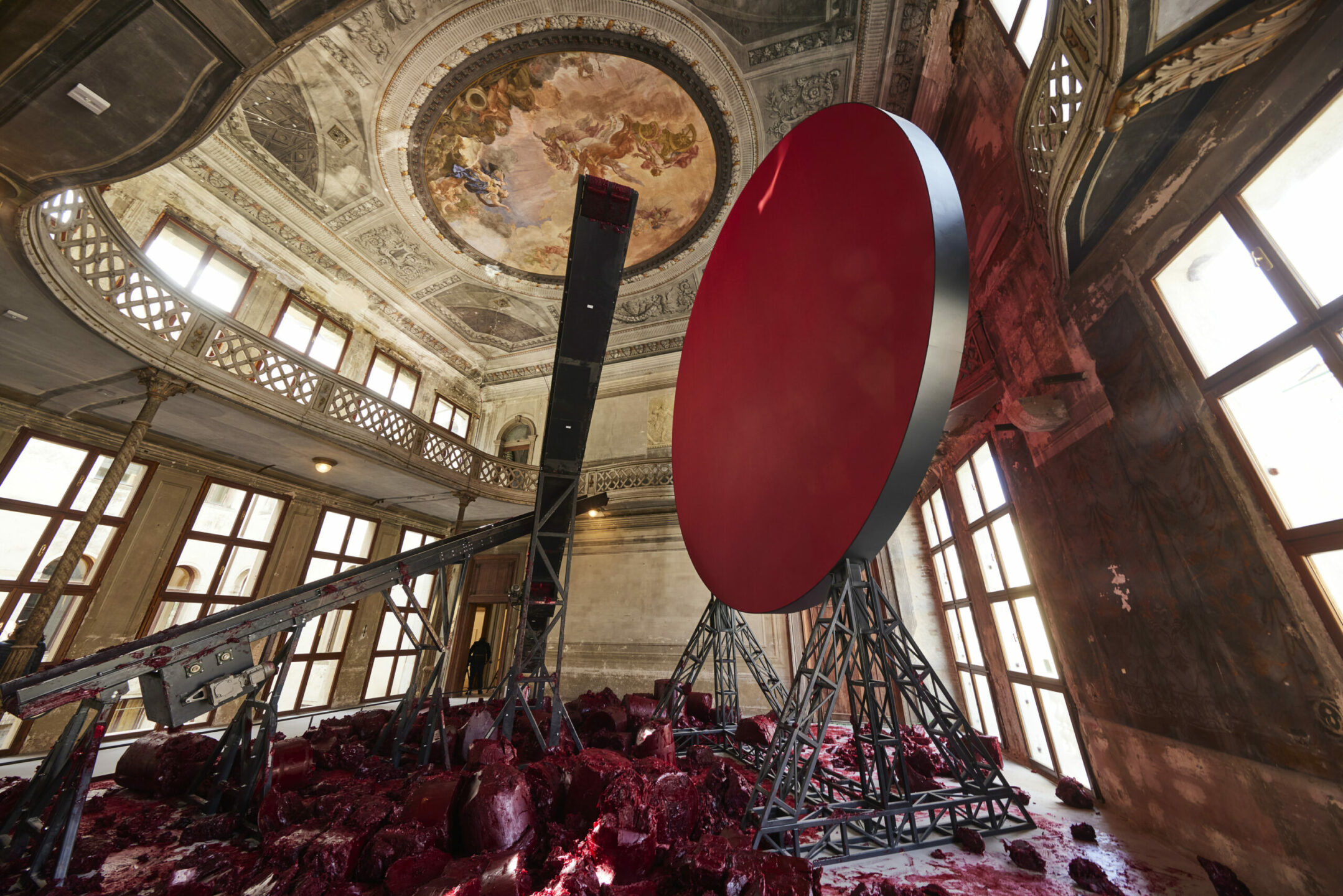
Exhibition views. Anish Kapoor. Gallerie dell’Accademia di Venezia & Palazzo Manfrin, Venice, 2022. Photo. © David Levene © Anish Kapoor. All Rights Reserved, DACS / ADAGP, Paris, 2022. Courtesy the artist and kamel mennour, Paris.
To cap off the guide, we end with two superstars of the art world. First, we direct you to a massive, two-art exhibition by Anish Kapoor (Kamel Menour) aptly titled “Anish Kapoor in Venice.” The show sees the artist take over both the Gallerie dell’Accademia and Palazzo Manfrin. Retrospective works — including the bloody “Shooting into the Corner” (2008-2009) — mesh with new pieces like “Mount Moriah at the Gate of the Ghetto” (2022) and “Split In Two Like a Fish For Frying” (2022). With over 60 works on view, it marks the first time a British artist has ever had a major exhibition at the Gallerie dell’Accademia, and is on view until September 24.
Finally, in the cavernous Oficine 800 on Venice’s Giudecca island, “20th Painting Action” by Hermann Nitsch (Galerie Kandlhofer + Galerie Thoman) has taken on a new significance after the famed artist passed away on April 18. The artist’s death now makes this the final major exhibition of work, and is the first time that the works from this series are on view in Italy since their original creation and exhibition. This monumental ode to the artist is on view until July 20 and serves as a perfect capstone on our guide to the 59th Venice Biennale.
Chris Erik Thomas is the Digital Editor of Art Düsseldorf. They work as a freelance writer and editor in Berlin and focus primarily on culture, art, and media. Their work can also be seen in Highsnobiety, The Face Magazine, and other publications.